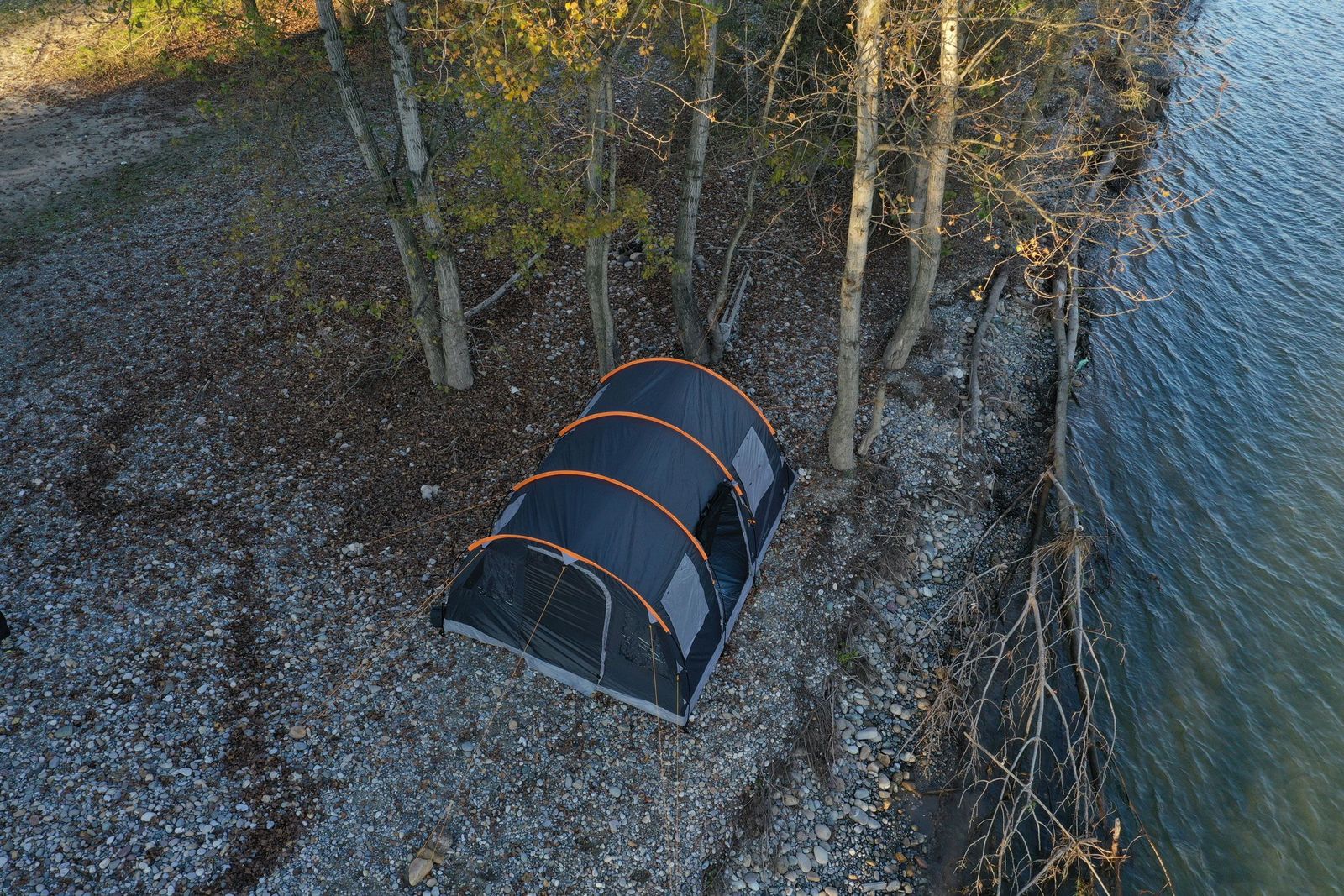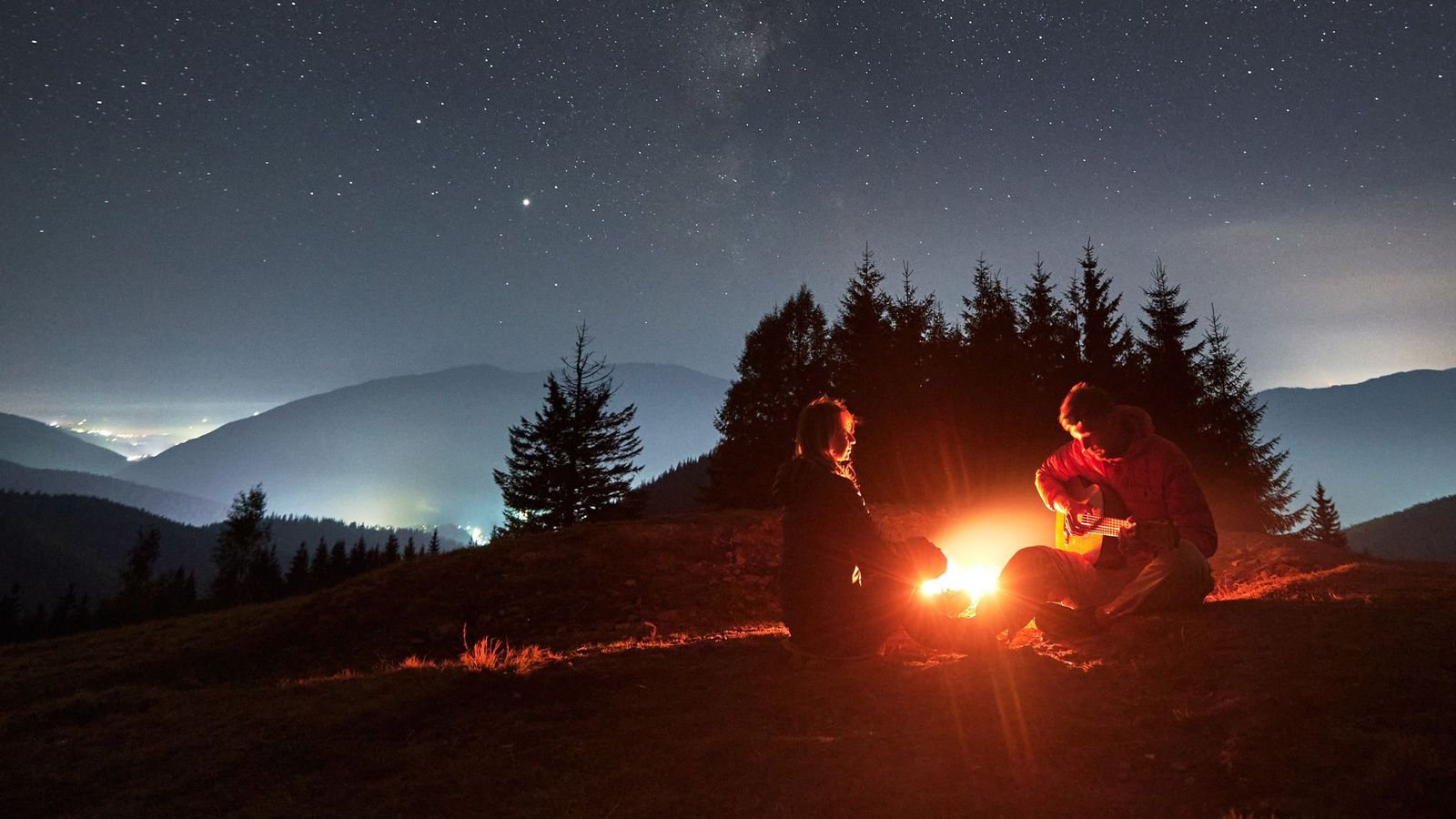
Making a campfire - in 7 simple steps
You should pay attention to these things when making a fire
Whether at the campsite or in your own garden: an evening campfire is the perfect end to the day. Spend a few cosy hours outside with friends and family**. Add stick bread or sweet s'mores and the evening is perfect. But how exactly do you make a campfire and what do you need to watch out for? We explain what you should bear in mind when making a fire and how to get the campfire burning quickly.
1. observe the official rules for making campfires
Lighting a fire is subject to various regulations from country to country as well as from federal state to federal state in Germany. Always find out about the relevant laws in advance. Remember that lighting a fire harbours many dangers and that you should handle it carefully.
Open fires are prohibited everywhere in nature reserves, national parks and nature reserves. Lighting a fire is also not permitted in public places or agricultural areas.
Lighting a fire in the garden is possible in principle. Here, too, there are different regulations in each federal state - sometimes even in individual municipalities. In general, an open fire in the garden may only be lit in a fire bowl or fire basket, but not on the ground like a classic campfire. Also be considerate of your neighbours. In densely populated areas, it is therefore advisable not to light a campfire in the garden. If you are renting, you must first clarify lighting a fire with your landlord and obtain permission.
In addition, only untreated wood or **alternatively charcoal **may **be used.
2. find the right place for the campfire
The most important thing when making a campfire: Keep your distance. Always make sure that there are no flammable materials** within a radius of about **three metres. This includes your personal items such as your tent or other equipment as well as trees or bushes that can catch fire quickly.
Use *sand, stones or earth* as ground for the fire so that nothing else catches fire. Ideally, you should mark out the fire pit itself with stones.
At official campsites you are usually lucky enough to have fire pits. This is also often the case at lakes, rivers or rest areas**. Here you can simply barbecue or make a fire.
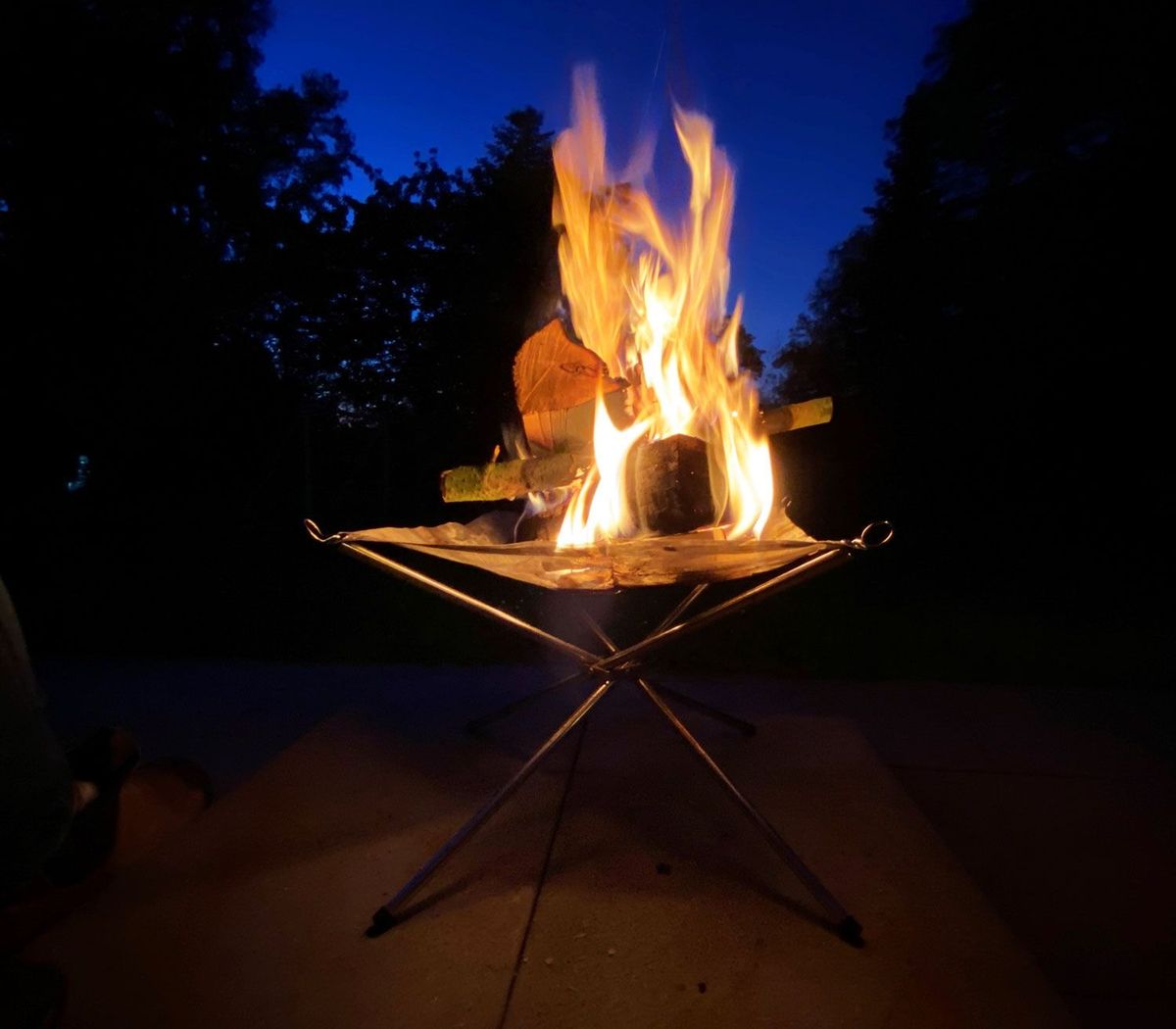
3. choose the right fuel for making a fire
There is no question that the material must be dry. However, choosing the right firewood is particularly important. Make sure that you use both thin branches and thicker wood so that the fire burns for a long time.
Thin branches and other easily combustible material such as shavings, dry bark or leaves are ideal for lighting the fire. If you don't have this fuel to hand, the following trick may help. Take a larger piece of wood and cut the top layer into fine strips without completely separating it from the wood. These shavings can then be used as an alternative to other highly flammable material.
Note that you may need to chop large pieces of wood smaller with an axe so that they are no longer than the length of your forearm. The wood should also not be too thick - quarter it if necessary.
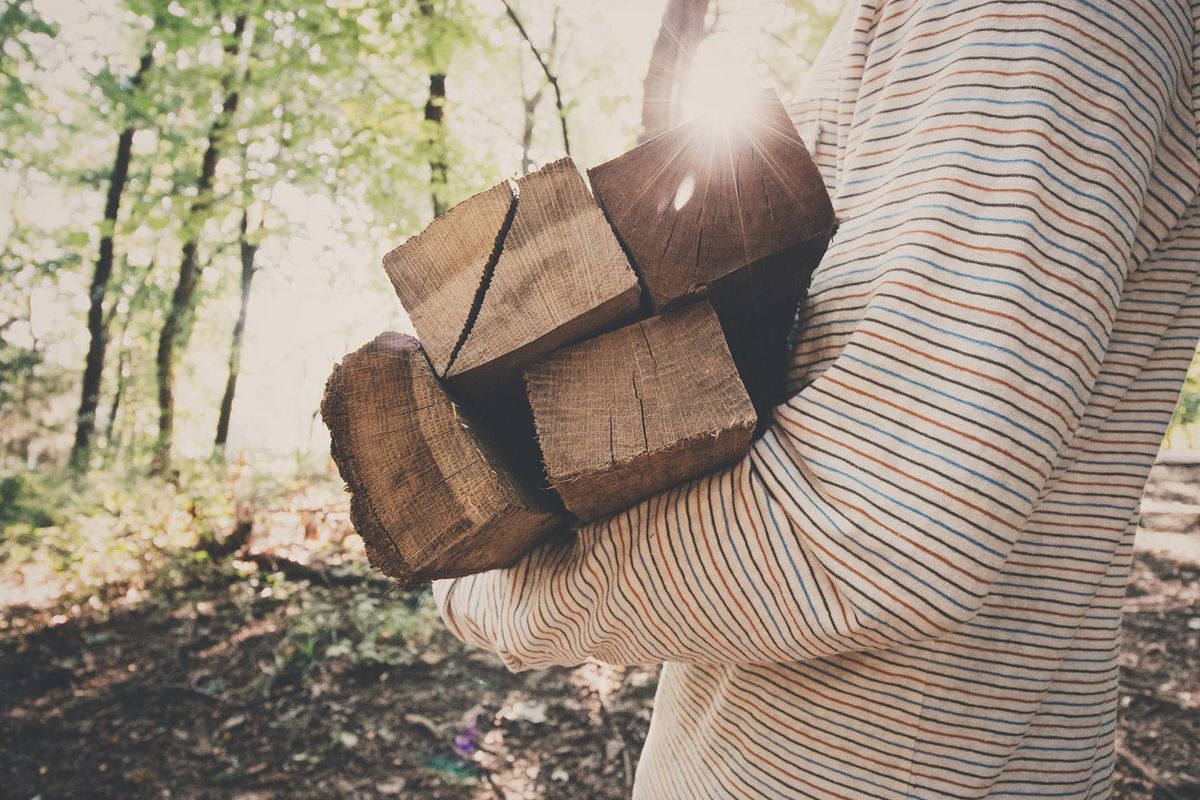
4. layer the fuel in a pyramid shape
Firstly, start with a small pile of leaves and shavings - i.e. the easily flammable material. Then place a few millimetre-thick, small branches on top of the pile. This creates the so-called heart of fire. This is followed by thinner branches and thicker pieces of wood that are about as long as your forearm. You then place this material in a pyramid shape over the easily flammable material. Place the large pieces of wood over the thinner branches. This creates your pyramid fire, which is easy to light. Make sure that one spot remains free for the leaves. This is where you light the fire. It also ensures that the fire does not suffocate and can breathe. Oxygen is important to keep the fire burning.
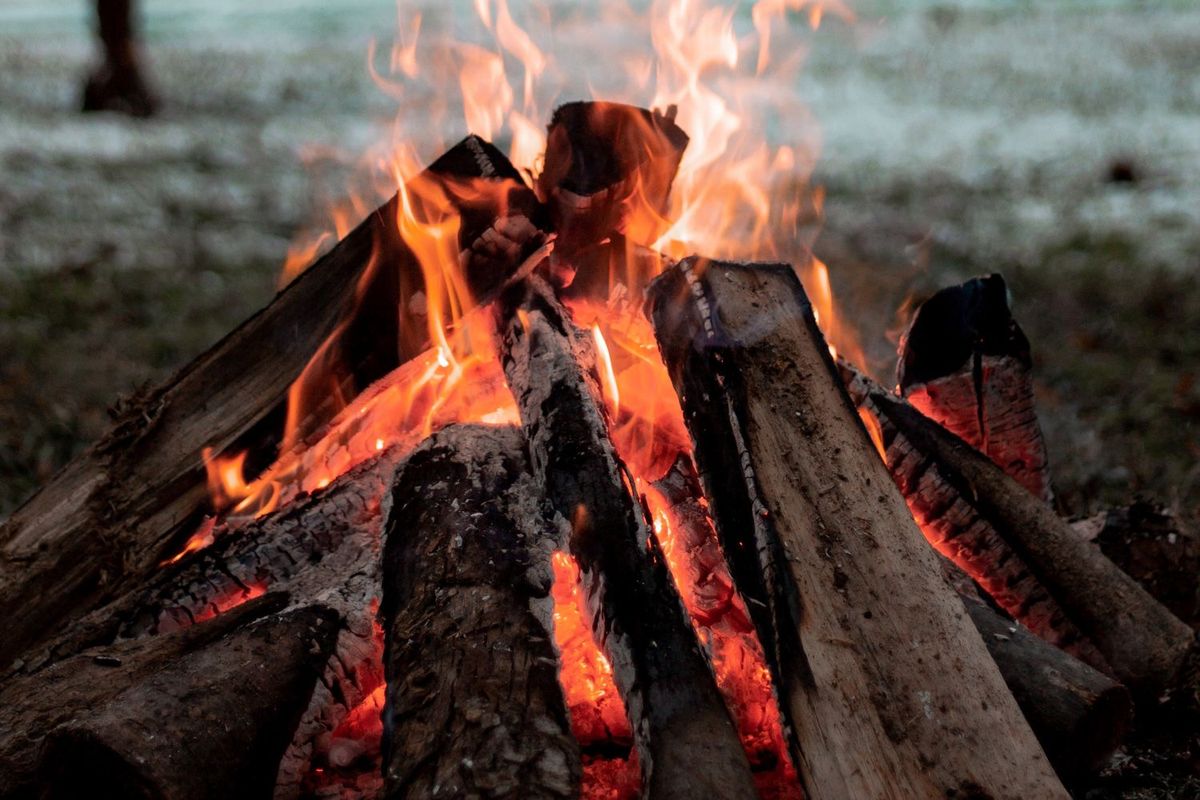
5. light the fire
To light the fire, you will need either a lighter or matches. Alternatively, you can use fire steel. Although this takes a little longer, it has the advantage that, unlike matches and lighters, it also works if it gets damp.
Hold the fire in the open area towards the leaves or wood shavings. Once the material is burning, wait a moment and blow something into the wooden pyramid so that the fire spreads and the thicker pieces of wood catch fire. Don't forget to add enough wood early before it goes out and you can continue to sit cosily around the fire with your family.
As long as the fire is burning, there should always be at least one person keeping an eye on the fire. On the one hand, so that the campfire continues to burn and, on the other hand, so that dangers are excluded. This includes the possibility of the wind getting stronger or changing direction, children getting injured or sparks being spread to other objects.
6. be careful in windy conditions
When you're out in nature, you have no influence on the weather conditions. Here, the weather can go crazy and change quickly. Especially in strong wind, it is best not to light a campfire at all. Strong winds cause the fire to spread quickly and uncontrollably and sparks to fly further than expected.
However, a little wind is very useful. Light the campfire so that you shield the fire from the wind with your back. Once it is burning, leave this spot. This way, the wind always blows slightly into the pyramid fire so that it continues to burn.
7. extinguish your campfire properly
You should play it safe and extinguish the campfire completely before you lie down in your tent late at night after a nice end to the day by the campfire. Even if you think the fire is already out, there is a risk that the wind will reignite a small ember and the campfire will continue to burn. To avoid this problem, it is best to extinguish the fire with sand or water.
Before you start making a fire, you should familiarise yourself with the laws and regulations that apply in the region. Make sure you build up the wood in a pyramid from small to large fuel and light it correctly. This way, nothing stands in the way of a cosy evening with friends and delicious food around the campfire.
Unsere Empfehlung für dich



